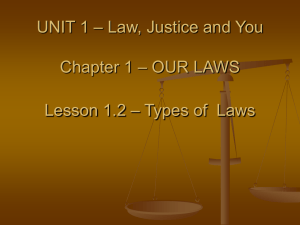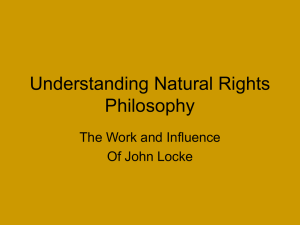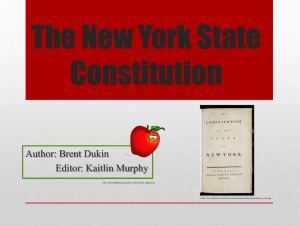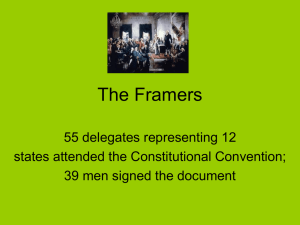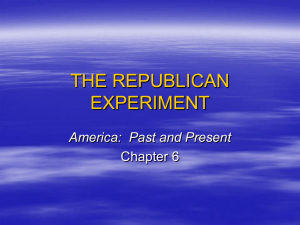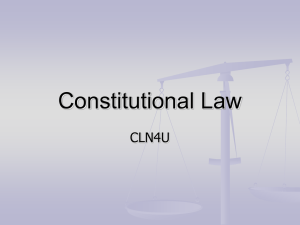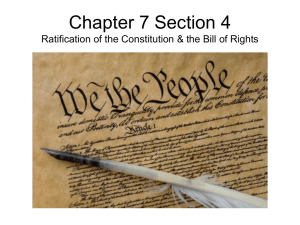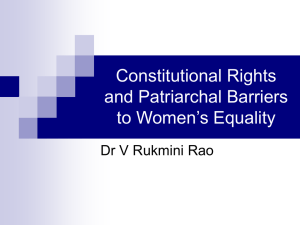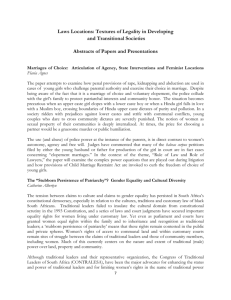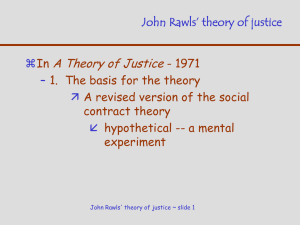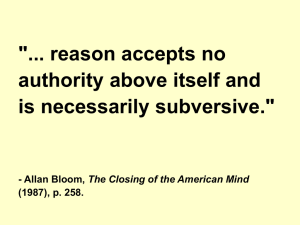Available
advertisement
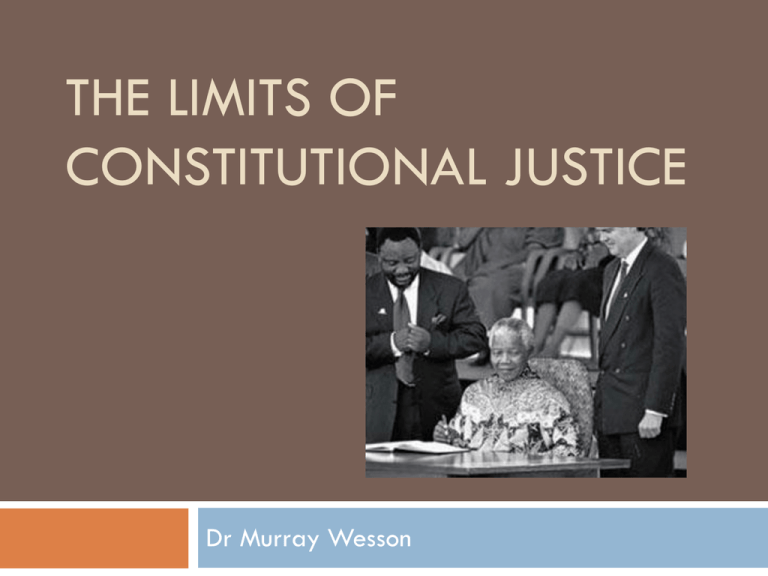
THE LIMITS OF CONSTITUTIONAL JUSTICE Dr Murray Wesson ‘But a constitution is not intended to embody a particular economic theory, whether of paternalism and the organic relation of the citizen to the State or of laissez faire. It is made for people of fundamentally differing views…’ Lochner v New York 198 US 45 (1906) 198 (Holmes J) John Rawls, A Theory of Justice 1. 2. Each person is to have an equal right to the most extensive total system of equal basic liberties compatible with a similar system of liberty for all. Social and economic inequalities are to be arranged so that they are both (a) to the greatest benefit of the least advantaged … and (b) attached to offices and positions open to all under conditions of fair equality of opportunity. Rawls on Constitutional Design The first principle (the basic liberties) is suitable for constitutionalisation but the second principle (the difference principle and fair equality of opportunity) should be pursued through ordinary law-making processes. In Political Liberalism, Rawls concedes that a social minimum – providing for the basic needs of citizens – is also a ‘constitutional essential.’ Erosion of the Rawlsian Distinction The Growth of Positive Obligations. The Embrace of Substantive Equality. The Proliferation of Social Rights. Procedural innovations to facilitate representation of disadvantaged individuals and groups. The Growth of Positive Obligations ‘Genuine, effective freedom of peaceful assembly cannot … be reduced to a mere duty on the part of the State not to interfere’ (Plattform ‘Artze fur Das Leben’ v Austria (1991) 13 EHRR 204 para 32). ‘Time and again these have been shown to be false dichotomies’ (R v Secretary of State for the Home Department, ex parte Limbuela [2005] 1 AC 396 para 92). The Growth of Positive Obligations ‘The state must respect, protect, promote and fulfil the rights in the Bill of Rights’ (section 7(2) of the 1996 South African Constitution). The Embrace of Substantive Equality Formal equality: Everyone should be treated equally, regardless of their membership of particular groups. Substantive equality: Measures may be taken to promote the position of disadvantaged individuals and groups. The Embrace of Substantive Equality ‘Nothing in this article … shall prevent the State from making any special provision for the advancement of any socially and educationally backward classes of citizens or for the Scheduled Castes and the Scheduled Tribes’ (section 15(4) of the 1949 Indian Constitution). The Embrace of Substantive Equality ‘…the State shall take legislative and other measures … designed to redress any disadvantage suffered by individuals or groups because of past discrimination’ (Section 27(6) of the 2010 Constitution of Kenya). The Proliferation of Social Rights Social rights establish rights to goods such as housing, healthcare, social security, food and water, although this obligation is often made subject to progressive realisation and available resources. Social rights were recognised in the 1937 Constitution of Ireland and the 1949 Constitution of India, but in the form of non-justiciable principles. The Proliferation of Social Rights The 1996 Constitution of South Africa includes justiciable social rights. Every Latin American constitution now includes the rights to education, healthcare, social security and food, as does the 2012 Constitution of Egypt. Courts in the United Kingdom and Germany have interpreted some civil and political rights so as to include social rights guarantees. Constitutional Law and Reasonable Disagreement Rawls supposes that in the well-ordered society reasonable citizens will agree on the principles of justice. However, most democratic societies feature deep and reasonable disagreement about the principles of justice, including the state’s obligations in respect of social and economic inequality. Constitutional Law and Reasonable Disagreement Constitutions differ from ordinary law given that they constrain ordinary law-making processes. For democratic reasons, and reasons of legitimacy, constitutions should attract a broad cross-spectrum of support. To what extent can constitutions – and by extension courts – address issues of social justice in circumstances where the nature of the socially just society is reasonably contested? A Right to a Social Minimum or a Right to Social Democracy? ‘Everyone has the right to have access to healthcare services’ (section 27(1) of the 1996 South African Constitution). ‘Every person has the right to the highest attainable standard of health’ (section 43(1)(a) of the 2010 Kenyan Constitution). Judicial Enforcement of Positive Obligations ‘A reasonableness challenge requires government to explain the choices it has made ... In this way, the social and economic rights entrenched in our Constitution may contribute the deepening of democracy. They enable citizens to hold government accountable not only through the ballot box but also, in a different way, through litigation’ (Mazibuko v City of Johannesburg (2010) 4 SA 1(CC) para 71). Accountability implies a secondary or supervisory role for the judiciary. Conclusion Constitutional justice is not co-extensive with justice, at least where justice is reasonably contested. However, constitutions and courts can assist in securing a basic level of welfare provision, and also deepen accountability in respect of the state’s human rights obligations, especially in respect of vulnerable individuals and groups.

